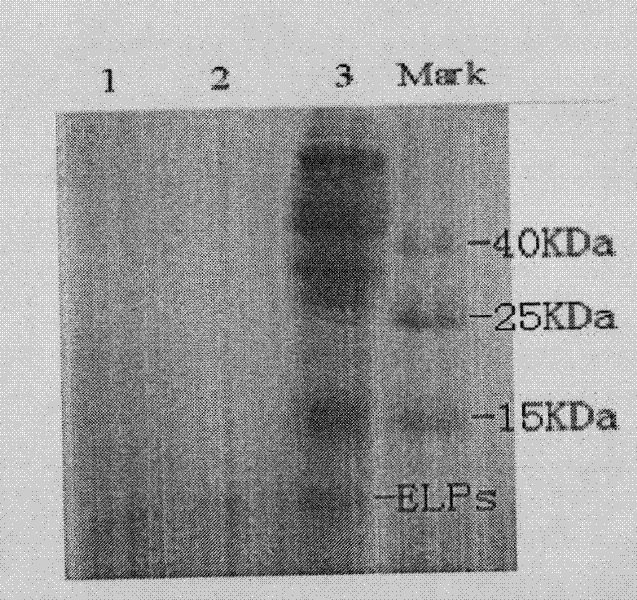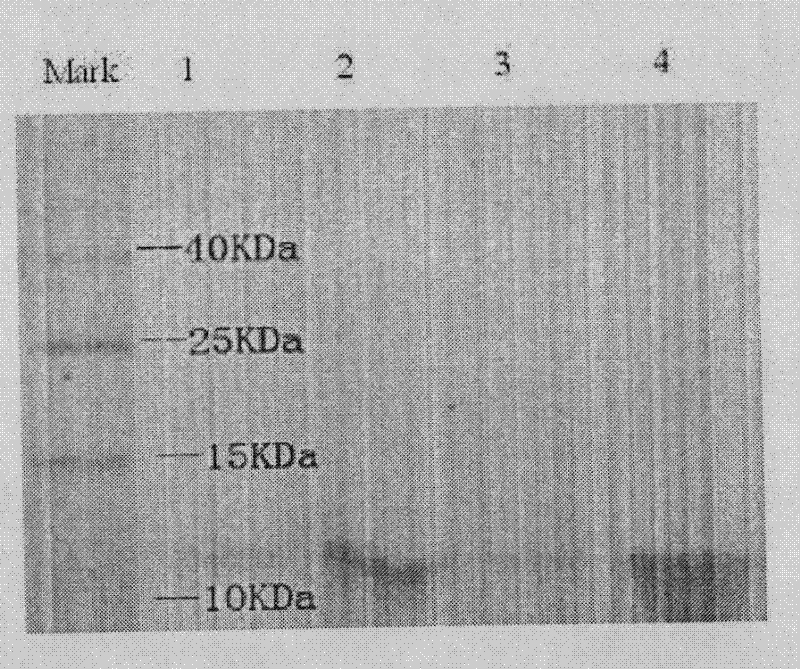Fusion tagging protein for nonchromatographic sepration of target protein and coding gene and preparation method thereof
A chromatographic separation and fusion tag technology, which is applied in the fields of fusion tag proteins and their encoded genes and preparation, can solve the problems of pollution, mixing, and long reaction time, and achieve the effects of avoiding cumbersome operations, high-efficiency expression, and low cost.
- Summary
- Abstract
- Description
- Claims
- Application Information
AI Technical Summary
Problems solved by technology
Method used
Image
Examples
Embodiment 1
[0023] A fusion tag protein capable of non-chromatographic separation of target proteins, characterized in that it has the amino acid sequence shown in Sequence Table 1 or its fusion protein, or its functional fragment, or one of its functional fragment derivatives kind. A preparation method of a fusion-tagged protein (KV8F) capable of performing non-chromatographic separation of the target protein in this embodiment: the coding gene of the sequence shown in Sequence Table 2 is inserted into the modified high-efficiency expression vector pET-22b. The transformation method is to use the gene fragment CAT ATG AGC AAA GGG CCG GGC TGG CCG TGA TAA GAA TTC in the sequence table 3 to replace the gene fragment from Nde I to EcoR I in pET-22b (+). Restriction digestion with pf1MI and Bg1 I, recovery of ELP[KV after electrophoresis separation 8 F-20] gene fragment, and then introduce this gene into the pET-22b (+) expression vector modified with SfiI enzyme digestion to construct the p...
PUM
 Login to View More
Login to View More Abstract
Description
Claims
Application Information
 Login to View More
Login to View More - R&D
- Intellectual Property
- Life Sciences
- Materials
- Tech Scout
- Unparalleled Data Quality
- Higher Quality Content
- 60% Fewer Hallucinations
Browse by: Latest US Patents, China's latest patents, Technical Efficacy Thesaurus, Application Domain, Technology Topic, Popular Technical Reports.
© 2025 PatSnap. All rights reserved.Legal|Privacy policy|Modern Slavery Act Transparency Statement|Sitemap|About US| Contact US: help@patsnap.com



